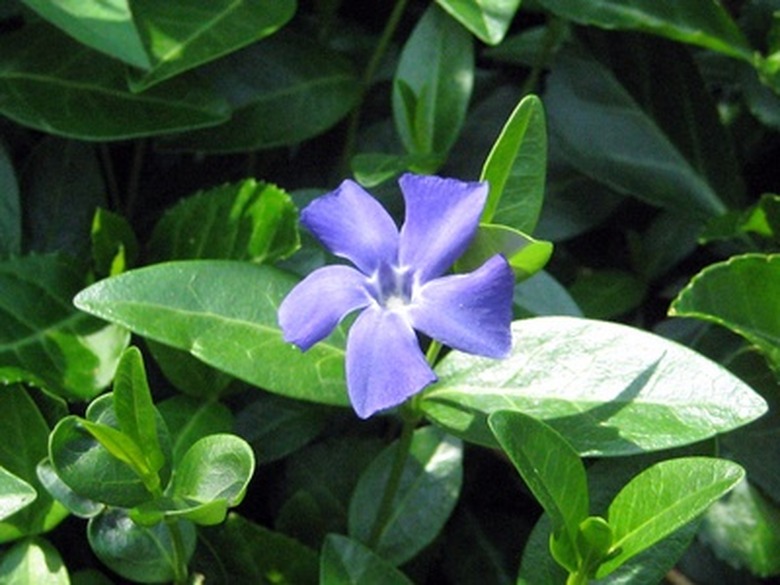How To Prune Vinca
Once established, vinca ground cover plants will rage out of control if you don't routinely keep them pruned. Yet many gardeners avoid pruning these blooming plants for fear of inadvertently injuring or damaging them with incorrect technique. This is one plant that you don't have to be afraid of pruning. In fact, many enthusiasts of the periwinkle consider the fact that it's nearly impossible to kill to be one of its most desirable traits. So don't be shy, just get out there and give it your best. If the results are somewhat less attractive than you had envisioned, don't worry about it. Your vinca will rally nicely and return to its former glory quickly, none the worse for wear.
- Once established, vinca ground cover plants will rage out of control if you don't routinely keep them pruned.
Step 1
Mow large areas of your vinca ground cover down to 4 to 6 inches tall early in the spring after all danger of frost has passed for your area. It's best to do this before new growth begins to emerge. Cutting back hard like this will help to control the rampant growth habit of these plants.
Step 2
Use a weed eater or shears to cut back smaller areas of periwinkles.
Step 3
Shear your vinca back to 4 to 6 inches once more in mid to late April.
Step 4
Cut out any dead, damaged or diseased stems as you notice them until fall.
Step 5
Snip stray or unattractive stems back as needed to keep periwinkles looking presentable throughout the growing season.
- Mow large areas of your vinca ground cover down to 4 to 6 inches tall early in the spring after all danger of frost has passed for your area.
Vinca Like The Sun?
Although there are over 12 species of vinca of different genuses and hardiness zones, the two most commonly seen in American gardens are greater periwinkle (Vinca major) and lesser periwinkle (Vinca minor). Greater periwinkle, hardy in U.S. Department of Agriculture plant hardiness zones 7 through 9, grows to a height of 6 to 18 inches and width of 1 to 2 feet. Its violet-blue flowers are about 1 ½ inches across, and its dark-green, ovate leaves are roughly 3 inches long. The sun, however, causes the plant to produce more flowers. Vinca is quite drought tolerant, but it prefers a moist environment, which is easier to maintain with some shade. Until plants have established and filled in the planting area, provide plenty of weeding and water. They also provide good groundcover for bulb beds, but you should plant them with bulbs that do not need a lot of division, like daffodils.
- Although there are over 12 species of vinca of different genuses and hardiness zones, the two most commonly seen in American gardens are greater periwinkle (Vinca major) and lesser periwinkle (Vinca minor).
- They also provide good groundcover for bulb beds, but you should plant them with bulbs that do not need a lot of division, like daffodils.
Things Needed
- Lawnmower
- Weed eater
- Shears
Tip
Be nice to your neighbors and to the environment. Don't allow your vinca to encroach onto the properties of others.
